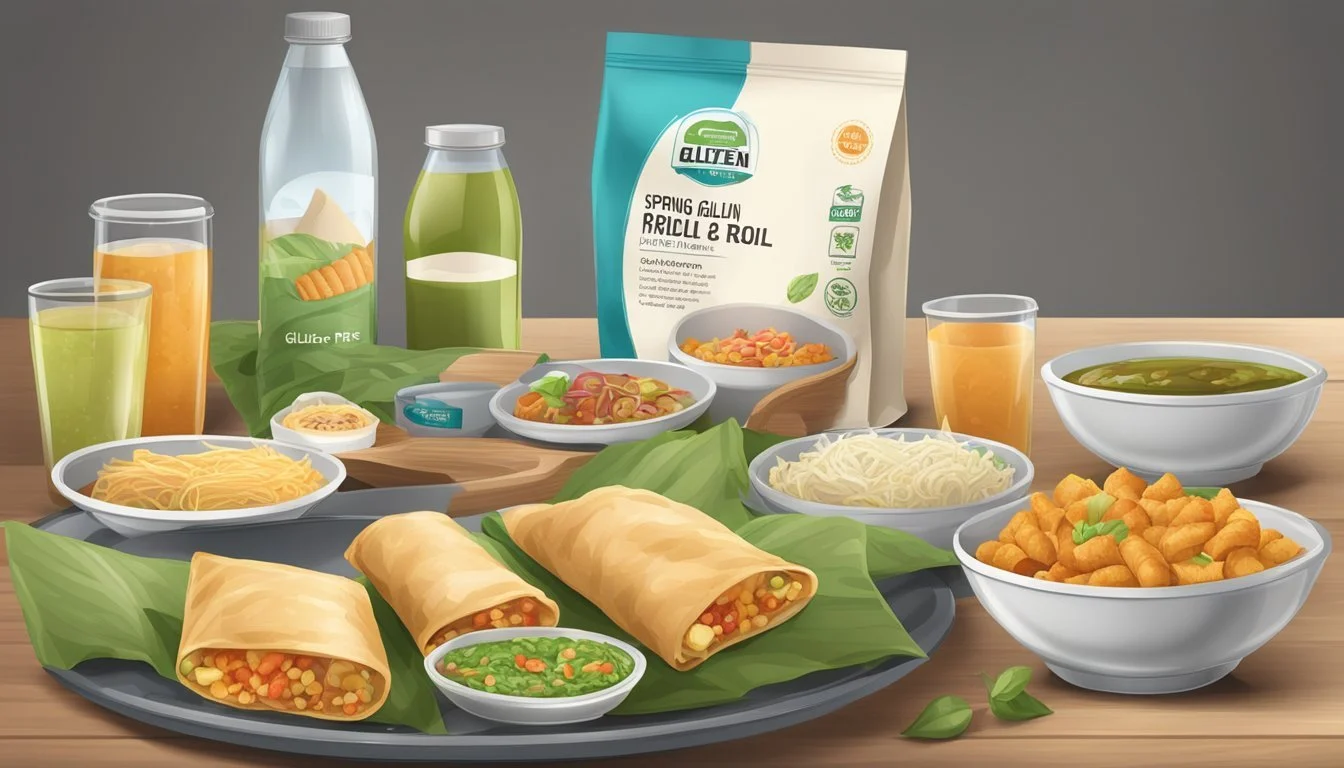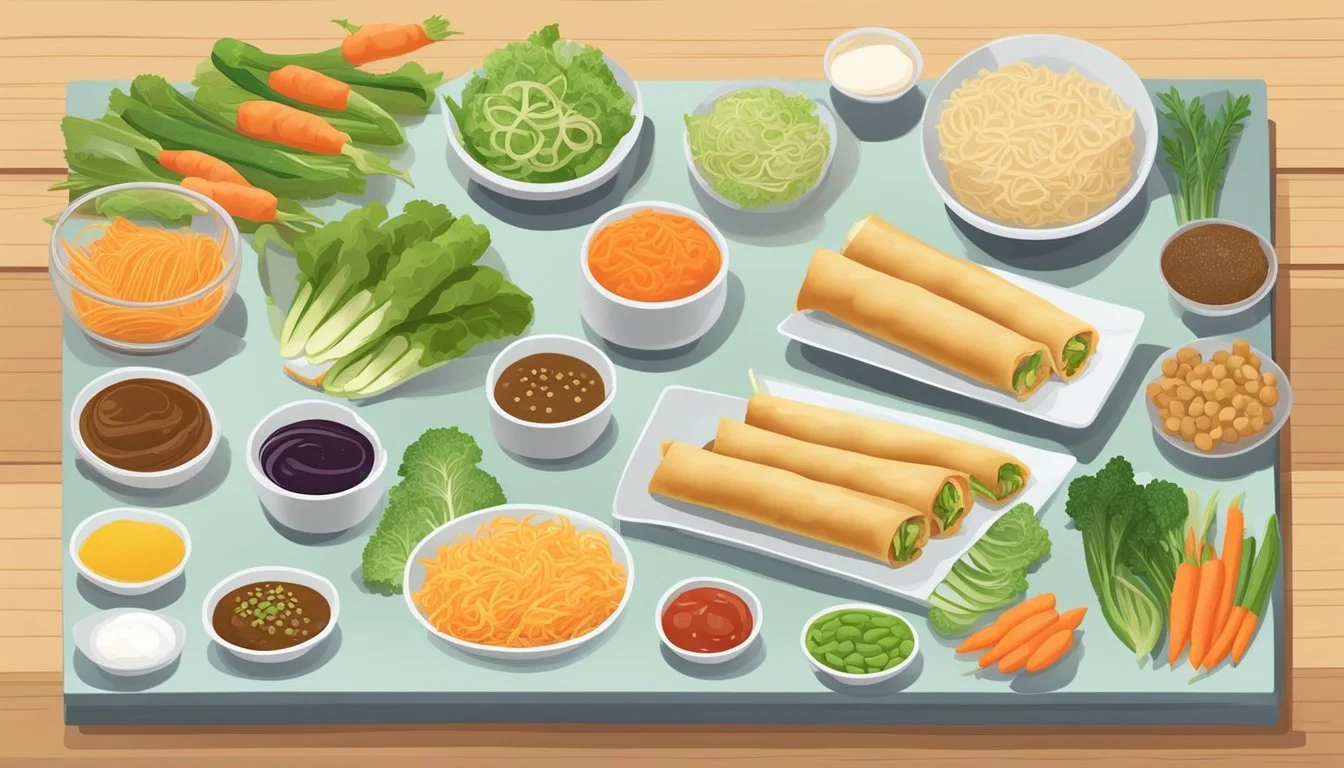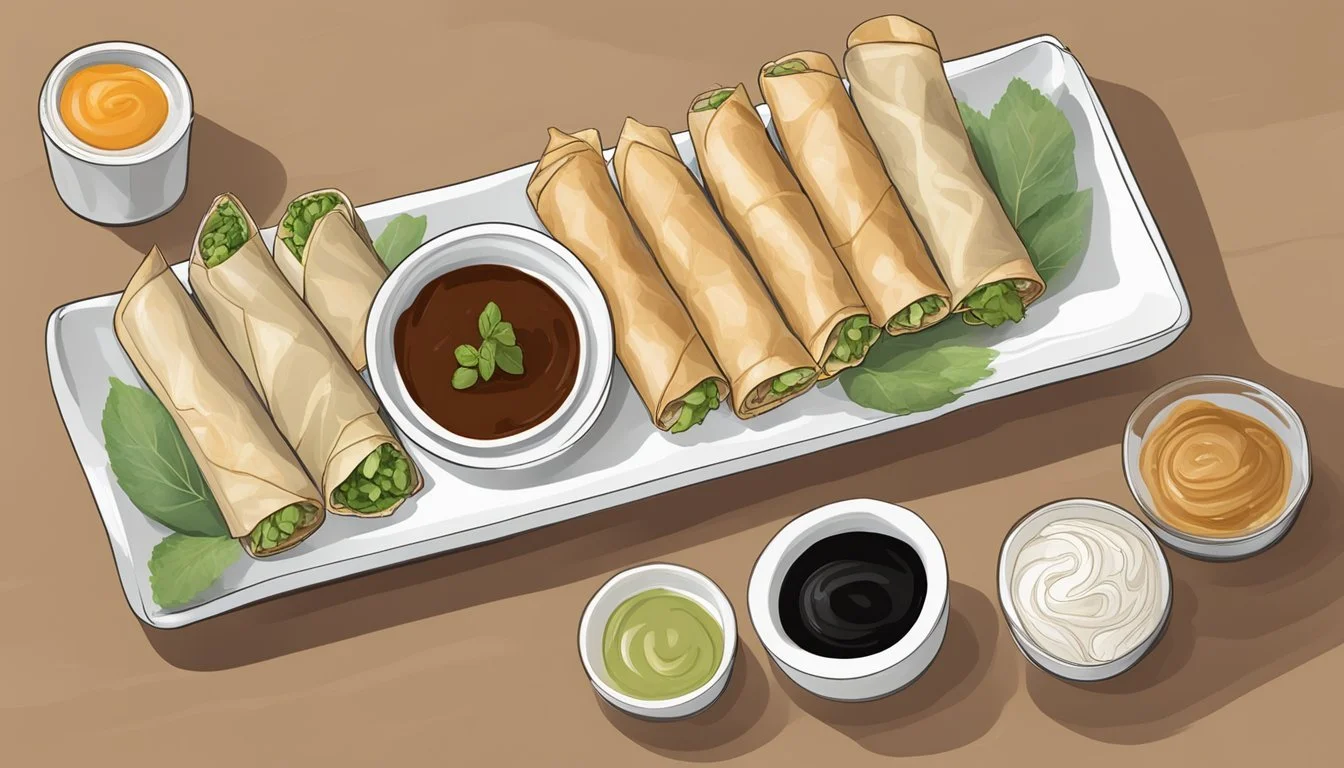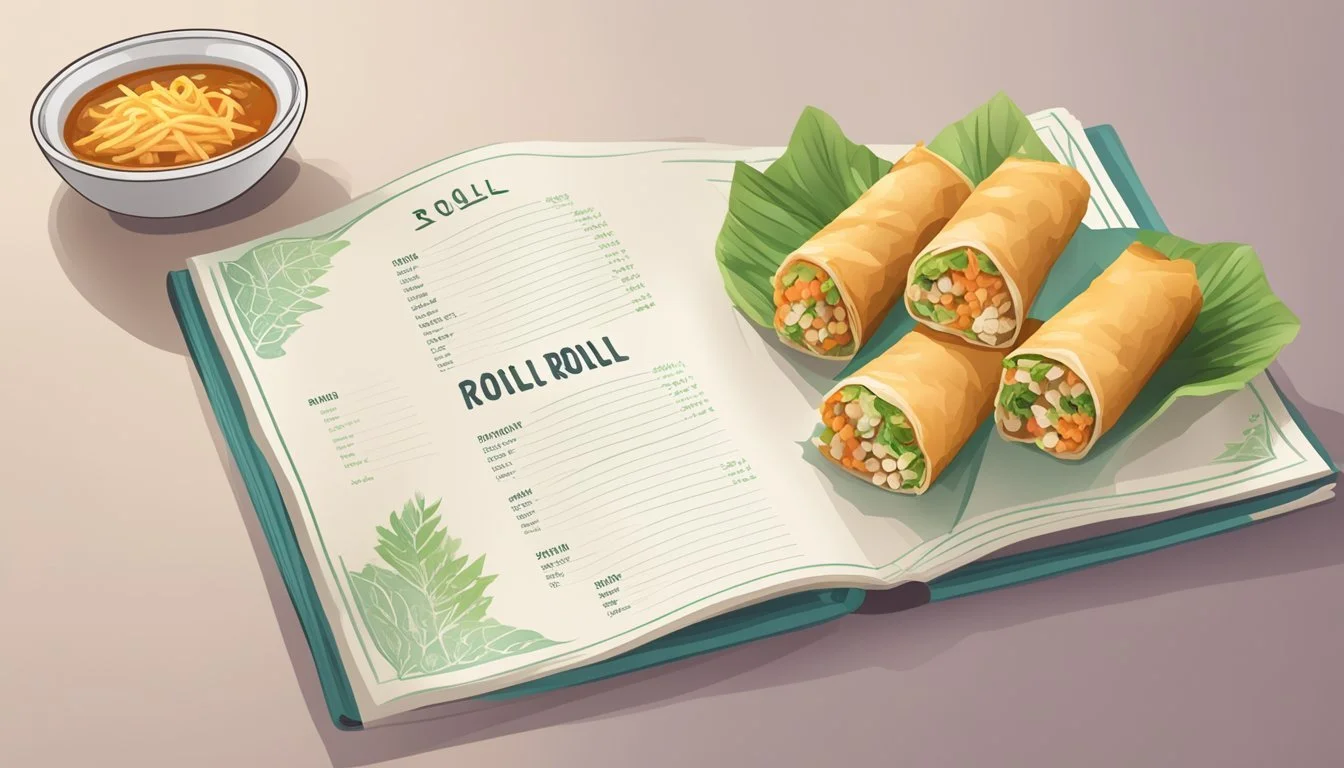Are Spring Roll Wrappers Gluten-Free?
Decoding Ingredients and Options
Spring roll wrappers, a key component of the beloved spring roll, vary widely in terms of their gluten content. The determinants of whether spring roll wrappers are gluten-free or not hinge upon the ingredients and preparation methods employed in their creation. Traditional spring roll wrappers are often made from a combination of rice flour, water, and salt, ingredients that are inherently devoid of gluten. This composition is especially prevalent in Asian cuisine where rice paper, a thin, translucent sheet, is a staple in Vietnamese and Thai dishes, typically allowing these wrappers to be gluten-free.
However, variations exist, and not all wrappers are made purely from rice flour. In some recipes, wheat flour is used, introducing gluten into the spring roll wrapper and rendering it unsuitable for individuals with gluten sensitivities or celiac disease. The matter is further complicated when considering the entire spring roll; while the wrapper may be free of gluten, fillers and accompanying sauces could contain gluten, making it imperative for those avoiding gluten to scrutinize every component of the spring roll.
In the landscape of modern dietary preferences and requirements, the availability of gluten-free options has increased. Culinary innovation has responded to the needs of those avoiding gluten, with numerous gluten-free alternatives now on the market that maintain the spring roll's cultural and culinary integrity. For those making spring rolls at home, carefully selected gluten-free ingredients and wrapper options ensure that enjoying this dish does not have to come at the expense of dietary restrictions.
Understanding Gluten and Its Dietary Restrictions
When considering the elements of a gluten-free diet, it is crucial to understand what gluten is and the fundamental principles behind gluten-free dietary restrictions.
What Is Gluten?
Gluten is a group of proteins found primarily in wheat, barley, and rye. It acts like a glue, giving food a stretchy quality and helping it maintain its shape. This protein can trigger adverse reactions in individuals with celiac disease or gluten sensitivity.
Gluten-Free Diet Basics
A gluten-free diet involves the complete avoidance of all foods containing gluten. This diet is essential for people with celiac disease, an autoimmune disorder where the ingestion of gluten leads to damage in the small intestine. It is also beneficial for those with non-celiac gluten sensitivity who experience symptoms after consuming gluten-containing foods. Here are the basic tenets of a gluten-free diet:
Exclude all sources of gluten: including but not limited to wheat, barley, and rye.
Seek out gluten-free alternatives: such as products made from rice, corn, or certified gluten-free oats.
Read labels carefully: as gluten can be present in less obvious products like soups, sauces, and processed foods.
Be vigilant about cross-contamination: even a small amount of gluten can be harmful to those with celiac disease.
The Composition of Spring Roll Wrappers
Spring roll wrappers are key components of various Asian cuisines with different ingredients determining whether they are gluten-free.
Common Ingredients in Spring Roll Wrappers
Typically, spring roll wrappers are made from a mixture of flours, water, and salt. Wheat-based wrappers are common, but they contain gluten, which is unsuitable for those with celiac disease or gluten sensitivity. However, rice flour and tapioca starch are often used as gluten-free alternatives. Tapioca starch adds elasticity, making the wrapper pliable and easy to work with, while rice flour imparts a desirable chewiness.
Gluten-free ingredients:
Rice flour
Tapioca starch
Non-gluten-free ingredient:
Wheat flour
It's essential for consumers to check the ingredient list as some manufacturers may add other components that contain gluten.
Rice Paper Characteristics
Rice paper, a type of spring roll wrapper, is typically produced using rice flour and is almost always gluten-free. Its distinctive features include:
Texture: Thin, pliable, and slightly sticky when wet
Appearance: Translucent and smooth
Rice paper wrappers are largely made from rice flour —sometimes with the addition of tapioca starch to increase pliability. They should contain no other grains or items containing gluten. Rice papers are also known for their quick-drying ability, which requires them to be moistened before use to become pliable enough for rolling.
For those seeking gluten-free options, it's essential to ensure that rice paper is made exclusively from gluten-free ingredients:
Primary ingredient: Rice flour
Possible secondary ingredient for elasticity: Tapioca starch
Differences Between Spring Roll and Egg Roll Wrappers
Exploring the distinctions between spring roll and egg roll wrappers reveals significant differences in composition and culinary use, crucial for those with dietary restrictions such as gluten intolerance.
Spring Roll Wrappers Examined
Spring roll wrappers are typically crafted from rice flour and sometimes tapioca starch, which naturally do not contain gluten. These wrappers are finer and more translucent compared to egg roll wrappers, resulting in a lighter, crispier texture when fried. Notably, spring rolls can be served both fresh and fried, and when steamed or eaten fresh, they exhibit a soft and pliable texture.
Composition: Rice flour, tapioca (possible ingredient), water.
Texture: Crispy when fried, soft and pliable when fresh.
Gluten Status: Generally gluten-free, but cross-contamination can occur.
Egg Roll Wrappers Identified
In contrast, egg roll wrappers are commonly made from wheat flour, which includes gluten, and are thus unsuitable for those with celiac disease or gluten sensitivities. They are thicker, contributing to a heftier final product. Egg rolls' characteristic crisp and bubbly texture upon frying is due to the presence of eggs and wheat flour in the dough.
Composition: Wheat flour, eggs, water.
Texture: Crisp and bubbly when fried.
Gluten Status: Contains gluten.
Exploring Gluten-Free Spring Roll Options
For individuals with gluten sensitivities or celiac disease, finding gluten-free options for favorite dishes like spring rolls is essential. This section details both ready-made wrappers and homemade recipes to ensure that the joy of savory spring rolls can be a part of a gluten-free diet.
Ready-Made Gluten-Free Wrappers
For those short on time or reluctant to make wrappers from scratch, ready-made gluten-free spring roll wrappers are a convenient alternative. These wrappers typically utilize a blend of gluten-free flours such as tapioca flour and rice flour. Consumers can find these wrappers in health food stores or well-stocked supermarkets. Some brands ensure their products are labeled gluten-free and non-GMO, offering additional reassurance regarding their safety and quality. For instance, a popular gluten-free option is the rice paper wrapper, known for its simplicity—just soften in water and fill.
Homemade Spring Roll Wrapper Recipes
For enthusiasts who prefer homemade alternatives, crafting gluten-free spring roll wrappers at home is achievable. The basic ingredients for a homemade recipe are often just tapioca flour and rice flour, with a pinch of salt. Home cooks mix these to create a pliable dough, which is then thinly rolled and cut into squares or circles. Homemade wrappers allow for complete control over the ingredients, ensuring they align with a gluten-free diet. They can be adapted to suit individual tastes, and when used fresh, provide a delightful texture to homemade spring rolls. Some recipes may utilize additional binders such as egg yolk to help seal the wrappers during the rolling process.
Creating Gluten-Free Spring Rolls at Home
Creating gluten-free spring rolls at home involves selecting the right fillings and following a series of steps to ensure that your rolls are free from gluten while still being delicious. This includes using gluten-free alternatives such as tamari for traditional soy sauce.
Selecting Gluten-Free Fillings
The choice of fillings for gluten-free spring rolls is critical. Ingredients should not only taste good together but also adhere to gluten-free guidelines.
Proteins: Common fillings such as chicken, pork, or shrimp should be prepared without any gluten-containing additives. Marinades or seasoning mixes used on these proteins must be verified as gluten-free.
Vegetables: A variety of vegetables can be used, such as lettuce, carrots, cucumbers, bell peppers, and cabbage. These should be fresh and naturally gluten-free.
Gluten-Free Tamari: As a substitute for traditional soy sauce, gluten-free tamari can be used in the preparation of fillings, lending umami flavor without the gluten.
Steps to Making Gluten-Free Spring Rolls
Making gluten-free spring rolls requires careful attention to both the ingredients used and the cooking methods employed.
Prepare the Fillings: Cook any proteins, like chicken or shrimp, and cut all vegetables into thin strips. Season with gluten-free spices or gluten-free tamari.
Gluten-Free Wrappers: Purchase or make wrappers that are labeled as gluten-free. These could be made from rice flour or other gluten-free flours.
Wrapping the Rolls: Lay a wrapper flat, place a moderate amount of filling in the center, fold the sides over the filling, and roll tightly. Use a gluten-free glue paste, such as a mixture of rice flour and water, to seal the wrapper if necessary.
Cooking: Options include deep-frying in a preheated oil pan until the wrapper is crispy or using an air fryer set to 390°F, flipping the spring rolls halfway through and cooking until they achieve desired crispiness.
By following these specific guidelines, one can prepare gluten-free spring rolls that are both safe for individuals with gluten sensitivities and enjoyable for all.
Considerations for a Healthier Spring Roll
When aiming to create a healthier spring roll, individuals must consider the cooking method and the contents to manage nutritional value and caloric intake.
Baked vs. Fried Spring Rolls
Baked Spring Rolls:
Calories: Typically lower in calories as they do not absorb as much oil.
Texture: Deliver a crisper texture without the greasiness associated with frying.
Method: It involves cooking in the oven, which reduces the amount of oil needed.
Fried Spring Rolls:
Calories: Higher in calories due to oil absorption.
Taste: Often have a richer flavor profile but at a nutritional cost.
Oil usage: They are traditionally cooked in vegetable oil, which can be high in calories.
Nutritional Content and Calorie Considerations
To enhance the health aspect of spring rolls, it's essential to consider not only the method of cooking but also the ingredients used:
Fillings:
Lean protein: Incorporating tofu or shrimp adds protein while being lower in fat.
Vegetables: Ample vegetables increase fiber and nutrients.
Wrapper:
Rice paper wrappers are often a lighter option compared to traditional wheat-based wrappers.
Aspect Objective Impact on Health Cooking Technique Aim for baking over frying. Reduces calorie count. Protein Choice Utilize low-fat options like tofu. Increases protein, maintains lower fat. Vegetables Maximize the use of fresh vegetables. Enhances fiber and micro-nutrients. Wrapper Selection Prefer rice paper for lower calorie wrap. Cuts down on gluten and calories.
By focusing on these elements, one can produce a spring roll that satisfies the palate while also aligning with health-conscious dietary goals.
Pairing Spring Rolls with Gluten-Free Dipping Sauces
Dipping sauces enhance the flavor of spring rolls, and those sensitive to gluten need not miss out as there are various gluten-free options available.
Popular Gluten-Free Dipping Sauces
Soy Sauce Alternatives: Traditional soy sauce contains wheat, thus isn't gluten-free. However, gluten-free tamari is a perfect substitute, offering a similar rich and salty flavor.
Sweet Chili Sauce: Often gluten-free, sweet chili sauce adds a spicy kick with a touch of sweetness. It's important to check labels as some brands may include gluten-containing ingredients.
Making Your Own Gluten-Free Sauce
Homemade sauces not only cater to gluten intolerance but also allow one to adjust flavors to personal preference.
Tamarind Sauce: Tamarind paste, water, sugar, and gluten-free tamari can be combined to create a tangy and savory sauce with a tropical twist.
Peanut Sauce: Combine peanut butter, lime juice, gluten-free tamari, and a hint of honey or sugar for a rich, creamy sauce that complements the fresh vegetables typically found in spring rolls.
Storing and Preserving Spring Rolls
Proper storage of spring rolls ensures they maintain their freshness and texture. Whether using rice paper wrappers or other types, the methods of refrigeration and freezing play a crucial role in preservation.
Best Practices for Refrigeration
When refrigerating spring rolls, they should be stored in an airtight container to retain moisture and prevent them from drying out. Spring rolls wrapped in rice paper are particularly delicate and can dry out quickly. They should be consumed within a day or two to enjoy their optimal taste and texture. To prevent sticking, one can place a sheet of parchment paper between the spring rolls.
Method: Place in airtight container
Material: Parchment paper (optional)
Duration: 1-2 days for best quality
Freezing and Reheating Options
Freezing spring rolls is a viable option for extended storage. Prior to freezing, one must ensure that the spring rolls are wrapped individually to prevent them from sticking together. To reheat frozen spring rolls, an oven or toaster oven can be used to achieve a crisp exterior.
Before Freezing:
Wrap each roll individually in plastic wrap.
Place wrapped rolls in a freezer-safe airtight container.
Reheating:
Preheat oven to 350°F (175°C).
Place frozen spring rolls on a baking sheet.
Heat for 15-20 minutes, turning halfway through.
By sticking to these guidelines, one ensures that their spring rolls are well-preserved and retain the quality for future enjoyment.
Navigating Restaurant Menus
When dining out, especially at Chinese restaurants, customers with gluten sensitivities should be vigilant, as menus can often feature items with hidden gluten. Familiarizing oneself with menu offerings and asking the right questions can ensure a safe, gluten-free dining experience.
Identifying Gluten-Free Menu Items
Diners should look for 'Gluten-Free' labels on menus, but they must remember that not all ingredients are listed. They need to be aware of seemingly safe choices like spring rolls, which could contain hidden gluten depending on the wrapper used. Fresh spring rolls in a translucent rice paper wrapper are often gluten-free, whereas fried spring rolls might be wrapped in dough that contains gluten. Additionally, accompanying sauces might use soy sauce as a base, which typically contains gluten unless otherwise specified.
To assist diners, here is a simple guide to identify potential gluten-free items:
Transparent Wrappers: Indicate rice flour-based spring rolls, likely gluten-free.
Opaque Wrappers: May suggest wheat flour is used, implying gluten content.
Fried Items: Often have a coating or batter which could contain gluten.
Sauces: Unless stated, assume they may have gluten-containing ingredients like soy sauce.
Questions to Ask at Chinese Restaurants
To navigate a Chinese restaurant menu with confidence, diners should not hesitate to ask the staff specific questions:
Inquiry about wrappers: "Are the spring roll wrappers made with rice flour only?"
Sauce components: "Does the dipping sauce contain soy sauce, and if so, is it a gluten-free variety?"
Cross-contamination concerns: "Is there a separate preparation area to minimize the risk of gluten cross-contamination?"
Ingredient substitutions: "Can modifications be made to ensure my meal is gluten-free, such as substituting soy sauce with tamari?"
These direct inquiries help in making informed choices and avoiding the inadvertent consumption of gluten.
Alternative Gluten-Free Wrappers and Uses
For those with gluten sensitivities, alternative gluten-free wrappers have become essential in reimagining classic dishes. Rice paper and innovative wrapper options enable the creation of a variety of flavorful and culturally diverse meals without the health concerns associated with gluten-containing ingredients.
Using Rice Paper for Different Dishes
Rice paper wraps are a versatile ingredient often utilized in Vietnamese cuisine, particularly for making summer rolls and Vietnamese spring rolls. These gluten-free wrappers are suitable for both sweet and savory fillings and can be used in the following ways:
Summer Rolls: Rice paper serves as the perfect encasement for a mix of herbs, vermicelli noodles, shrimp, or tofu.
Fresh Fruit Parcels: They can be filled with an assortment of sliced fruits, offering a refreshing and healthy dessert or snack option.
Salad Rolls: Incorporate your choice of leafy greens and julienne vegetables for a nutritious meal.
Innovative Gluten-Free Wrapper Ideas
Exploring gluten-free options has led to creative twists on traditional recipes requiring wrappers. Here are some innovative ideas for gluten-free wrappers:
Vegetable Slices: Large vegetables like zucchini or eggplant can be sliced thinly, grilled, and used as a wrap.
Cabbage or Lettuce Leaves: For a crunchier alternative, these leaves can be used raw or blanched for pliability.
Egg Wraps: Beating eggs and cooking them like a thin omelette can create a flexible and protein-rich wrap.
Understanding Cross-Contamination Risks
When it comes to maintaining a gluten-free diet, cross-contamination is a significant concern. It can compromise the safety of gluten-free items, transforming a safe meal into a risk for individuals with gluten sensitivities.
Cross-Contamination in Home Cooking
In home kitchens, the risk of cross-contamination is heightened by shared cooking spaces and utensils. It's crucial to be vigilant during food preparation:
Utensils and Appliances: They should be thoroughly washed if used with gluten-containing foods. Sponges and cleaning tools need to be gluten-free as well.
Preparation Surfaces: Countertops and cutting boards must be cleaned before use to ensure they are free from gluten residues.
Cookware: Non-stick pans that have been used to cook foods containing gluten can retain residues. Using dedicated gluten-free cookware is advisable to reduce risk.
Avoiding Gluten in Processed Foods
Processed foods are fraught with potential gluten exposure due to shared manufacturing facilities and equipment:
Shared Facilities: Even if a product is inherently gluten-free, production in a facility that also processes gluten can lead to cross-contamination.
Additives: It is essential to scrutinize food labels for additives that may contain gluten. Wheat-based additives are commonly used as thickeners or stabilizers in processed foods.
Labeling: Trust only products that are certified gluten-free or have clear labeling indicating the absence of gluten.
By thoroughly understanding and applying these measures, individuals can significantly lower the risks associated with cross-contamination.
Gluten-Free Spring Rolls in the Marketplace
When exploring gluten-free options for spring rolls in the marketplace, consumers will find a variety of products available at health food stores and also discover the importance of scrutinizing product labels for gluten content.
Health Food Store Options
Health food stores often stock an assortment of gluten-free alternatives catering to customers with celiac disease or gluten sensitivity. Among these products, gluten-free spring roll wrappers are a common item. These wrappers are typically made from rice flour, and health food stores may carry multiple brands to choose from. Some brands offer organic and non-GMO varieties, ensuring a healthier option for those with dietary restrictions.
Reading Labels for Gluten Content
Even though most spring roll wrappers at health food stores may be labeled as gluten-free, it is crucial to read the labels carefully. Here is what to look for:
Ingredients: Check for rice flour or tapioca starch as the primary ingredient, which are both gluten-free. Avoid any product that lists wheat, barley, rye, or non-specified starches, as these could contain gluten.
Certification: Look for a gluten-free certification mark, which assures that the product meets strict standards for gluten-free products.
Allergen Information: Manufacturers will often disclose if there's a risk of cross-contamination with gluten in the production facility.
By paying attention to these details, individuals can confidently select gluten-free spring roll wrappers from the marketplace.
Conclusion
When assessing the gluten-free status of spring roll wrappers, one must closely examine the ingredients. Traditional spring roll wrappers are typically made with rice flour, water, and salt. These rice paper wrappers are inherently gluten-free and suitable for individuals with gluten sensitivities or celiac disease.
However, caution is advised when purchasing or consuming spring rolls. Factors such as cross-contamination in the kitchen or the inclusion of non-gluten-free additives can compromise the gluten-free integrity of a spring roll.
Below is a summary to consider for gluten-free consumption:
Check the Labels: Look for clear labeling on packaged products to ensure they are certified gluten-free.
Inquire About Ingredients: When dining out, verify ingredients with restaurant staff.
Be Aware of Sauces: Many accompanying sauces may contain gluten, opting instead for gluten-free tamari or coconut aminos.
Homemade Alternatives: Consider making spring rolls at home with verified gluten-free ingredients to maintain control over what you eat.
In conclusion, spring rolls can be a safe option for those requiring a gluten-free diet, provided the ingredients and preparation method are strictly gluten-free. Always exercise diligence to avoid gluten exposure.






